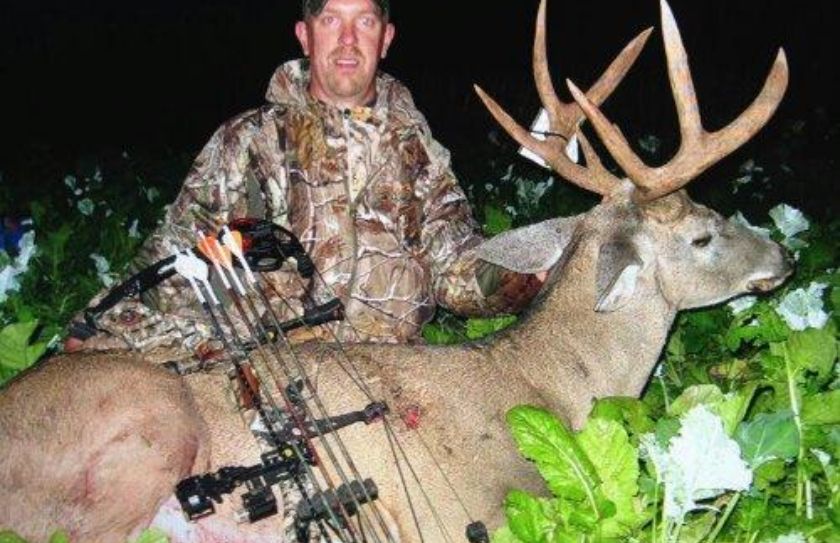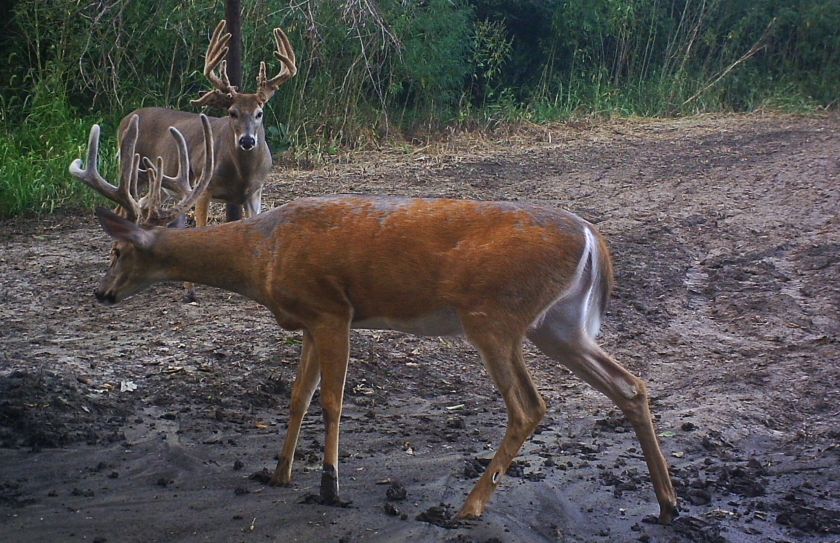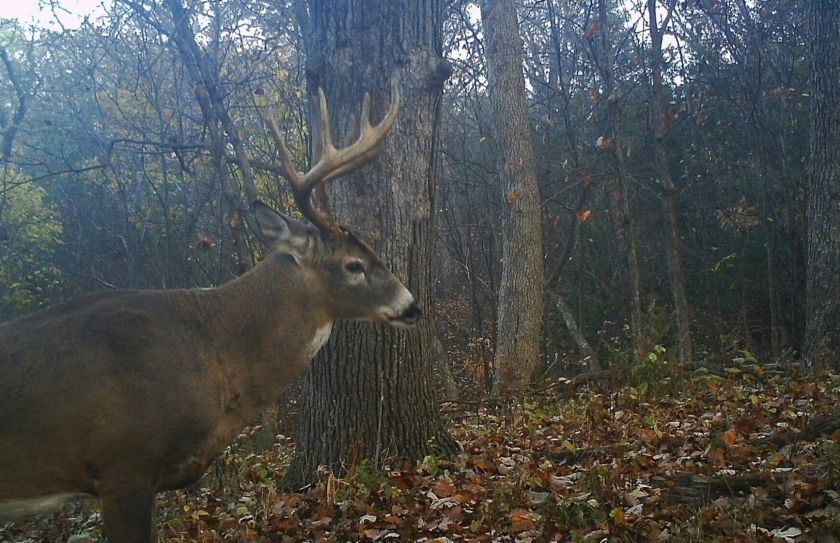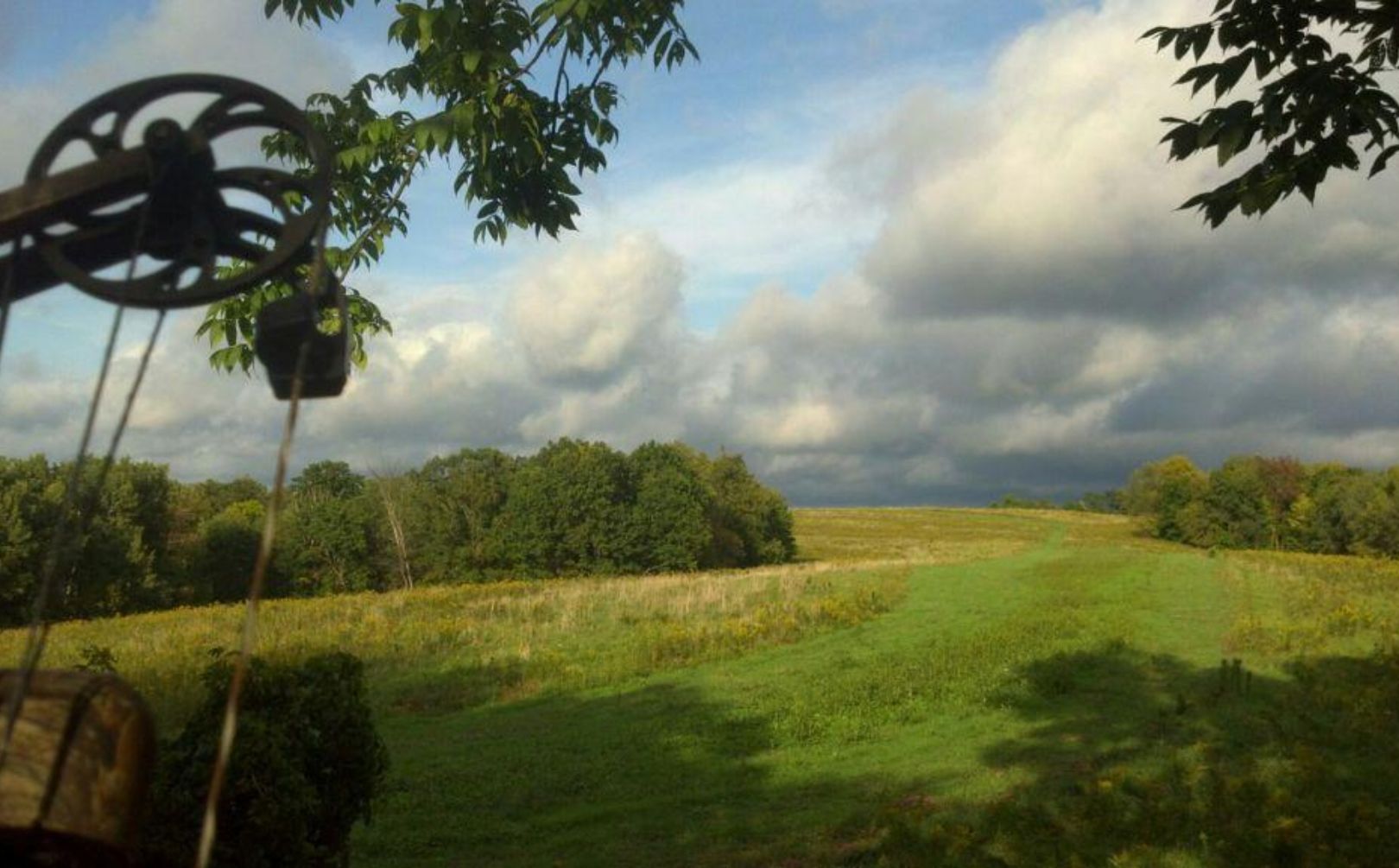
*Make sure to check out “10 Tips For Early Season Success”, for the latest strategies for hunting an early season monster buck.
There are different types of hunting cold fronts that pass through during the entire Fall, but in just a few short weeks you will have some outstanding opportunities for hunting an early season feeding front. Many are planning on hitting the woods as soon as the state says it is legal to do so, but there are a few that will be watching for changing conditions to tell them when to hunt.
*Check out this incredible opportunity that I followed closely during early October of 2012:
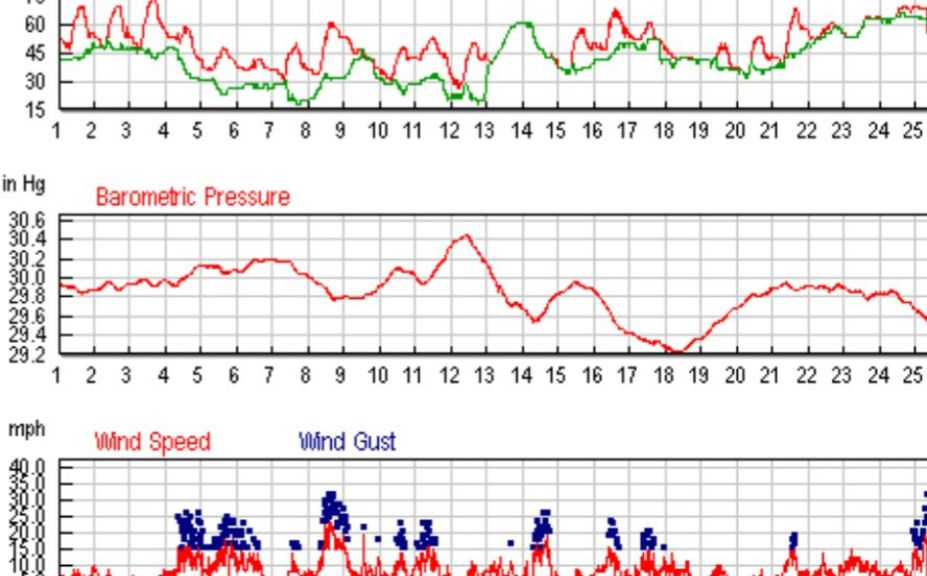
The front from the 4th to the 6th was about as drastic as it gets, including a 30 degree temperature drop and gust approaching 40 mph. When a front of this magnitude is combined with the loss of Summer forages, including soybeans, alfalfa, and native vegetation due harvest or maturity cycles, deer need to turn elsewhere for quality forage options. The factors of temperature, wind and food combine to create the “perfect storm” of early season feeding front every year. The following are some tips and tactics for choosing the right stand, during each phase of the front. You will often experience several different fronts of varying quality during September and October, so it pays to be ready!
1. Tactics for hunting an early season feeding front are different than pre-rut or rut hunting strategies.
An early season feeding front will expand and increase movements associated primarily with feeding activities. Save your “rut” stands for a later cold front, and concentrate mostly on those that have to do with feeding activity. Some of my favorite pre-rut stands are located between bedding areas on a good travel corridor, hidden bench, etc., but those stands don’t see a lot of movement during a feeding period, when deer are primarily moving straight from bedding, to feeding.
2. Avoid Stand Burn-out
During the heart of the front, when temps are diving and the wind speeds are high, I like to find a quiet spot to take a seat. But I also avoid burning out my stands for the next day’s sits when the conditions are quiet, and much better. The downwind side of a dense stand of conifers or a native grass field can be a productive spot for feeding deer, and the quiet and protected side of a ridge of at least 30’ in elevation or higher could provide for a deer-filled sit!
3. Evening Food
I love to set up near food in the evening…but far enough away for me to get in and out of the stand without spooking deer within the food source. It’s not uncommon if the winds settle down to see does feeding 3 hours or more before dark on un-hunted and un-pressured food sources. I suggest you keep it that way by not directly hunting over major food sources.. And remember if does are hitting the food a ½ hour before dark, that is probably not enough time for a much more patient and reclusive mature buck to get into the field. I get very excited when does are feeding early, because that can often equal a great hunt for the early season during the closing minutes of daylight, while targeting an older buck.
4. Bedding area stands that allow you to get into a stand without spooking deer in adjacent food bedding areas are a great choice too!
Getting into positions as close to the bedding area as possible without kicking out a deer that may have beat you to the location is a great choice for the morning hours. If you have a close, adjacent natural food source, such as mast crops or possibly a waterhole, you may find that a mature buck will leave his bed early for a quick snack or drink on the way to a distant evening food source.
Quality Weekend of Hunting
During this early October weekend I was able to pass on a variety of 3 and 4 year old bucks as I navigated the extreme conditions of a major feeding front.
Sit 1: Thursday Night, October 4th
Conditions: Diving temps into the 50s by the start of the sit, down 20 degrees from the day before, high winds
Location: Between bedding areas on a bench that funnels deer movement up and towards food sources. This was the “Quiet” side of the ridge that towers approximately 80’ in elevation above the stand. I observed deer moving from their bedding area around the point located in high winds, towards the quiet side and up the hollow towards oaks and eventually to the food sources within open fields 400 yards away.
Sit 2: Friday Morning, October 5th
Conditions: Temps in the 30s and moderate winds.
Location: Same stand as Sit 1. This was a “low hunter impact” stand location that allowed me to get in and out with minimal scent left behind. This is also very close to bedding areas, while allowing me to get in without spooking deer within those bedding areas. Again, this was a very “Quiet” stand location and could be accessed by avoiding food sources primarily a few hundred yards away.
Sit 3: Friday Evening
Conditions: Moderate and diminishing winds, temperatures dropping into the 20s overnight, starting at “sit time” in the upper 40s.
Location: Waterhole bench stand, with a bedding area located over the point, south and southeast of the stand location. Evening food sources started approximately 200 yards through the woods and into the field. This was an “early exit” stand; meaning does and fawns used the water source early on their way to the food source. The stand was located adjacent to one of the better bedding areas in the area which was surrounded by high food sources of change, including harvested corn, beans, and last-cut hay. Dry conditions had forced the social activity levels up for all of our water sources, and those dry conditions did not appear to be changing with the front as I observed over a dozen deer making their way from bedding to water to food.
Sit 4: Saturday Morning, October 6th
Conditions: COLD! 20s for temps and light to moderate winds.
Location: No sit. This is a “Feeding Front”, with a high priority placed on feeding movements. For Sat. morning I did not have a stand that I wanted to use that would not hinder my efforts during an evening feeding sit. Although in 3 weeks I was taking a seat in 1 of my 25+ stands and expecting great opportunities during outstanding pre-rut conditions, this was not the time of the season to do the same.
Sit 5: Sunday Morning, October 7th
Conditions: Cold, with changing winds! Northerly winds that ushered in the major cold front will be shifting back to westerly and southwesterly directions.
Location: Ridge top stand location located at the end of a narrow food strip, adjacent to a stand of mature oaks and a waterhole. The bedding area was very close to this location, and this was one of our best daylight all season mature buck game cam spots, providing pictures for the entire season for all bucks. I was sitting high on the ridges, with rising thermals, and my scent was far from any deer’s nose. The water level in the container was over ½ full, and the area was full of does, fawns and young to middle aged bucks nearly all morning.
Sit 6: Sunday Evening, October 7th
Conditions: Moderately cold afternoon temps, and shifted winds to more southerly from the previous days Northern blast.
Location: Inside woodsedge bench stand funneling deer from bedding to the right, and a small food source and then large evening food to the east/southeast. A waterhole at the stand location helpsed to define movements and doe bedding was located within 75 yards of the stand. Once the deer left the water they were “clear” and on their way to the small food source approximately 60 yards away. The area was secure, defined, and had been holding a small bachelor group of bucks that had been exiting the cover to feed on winter rye, oats, wheat, brassicas, and winter peas. The evening did not dissappoint with sigtings of over 10 different bucks including multiple 3 and 4 year olds within bow range.
Conclusion
Variety is key…and my own stand sites are chosen to preserve the next several sits. During a quality weekend like October 4th to the 7th of 2012, I enjoy narrowing down the best 5 or 6 stands out of 25 that are appropriate for the conditions and time of the year, and then mapping out when to use the stands. If I don’t have a stand for the conditions that is fresh, and that doesn’t effect another upcoming sit…I choose not to hunt. When available stand locations are minimal due to the timing of an early October feeding front, it’s not a bad idea to hit the same stand for an evening sit and then the morning after, hoping that the deer take a long enough time getting back to their bedding areas from feeding into the middle of the night, so that any human scent left behind is not a factor.
And finally, preservation is key! With the pre-rut only a few weeks away, it doesn’t pay to dive too far into the timber to access your best of pre-rut to rut stands. Instead, chipping away at those feeding movements during a “Feeding Front”, will provide for high quality sits while using stands appropriate for the time of the year, and not using stands that are better for another type of cold front closer to the rut.
